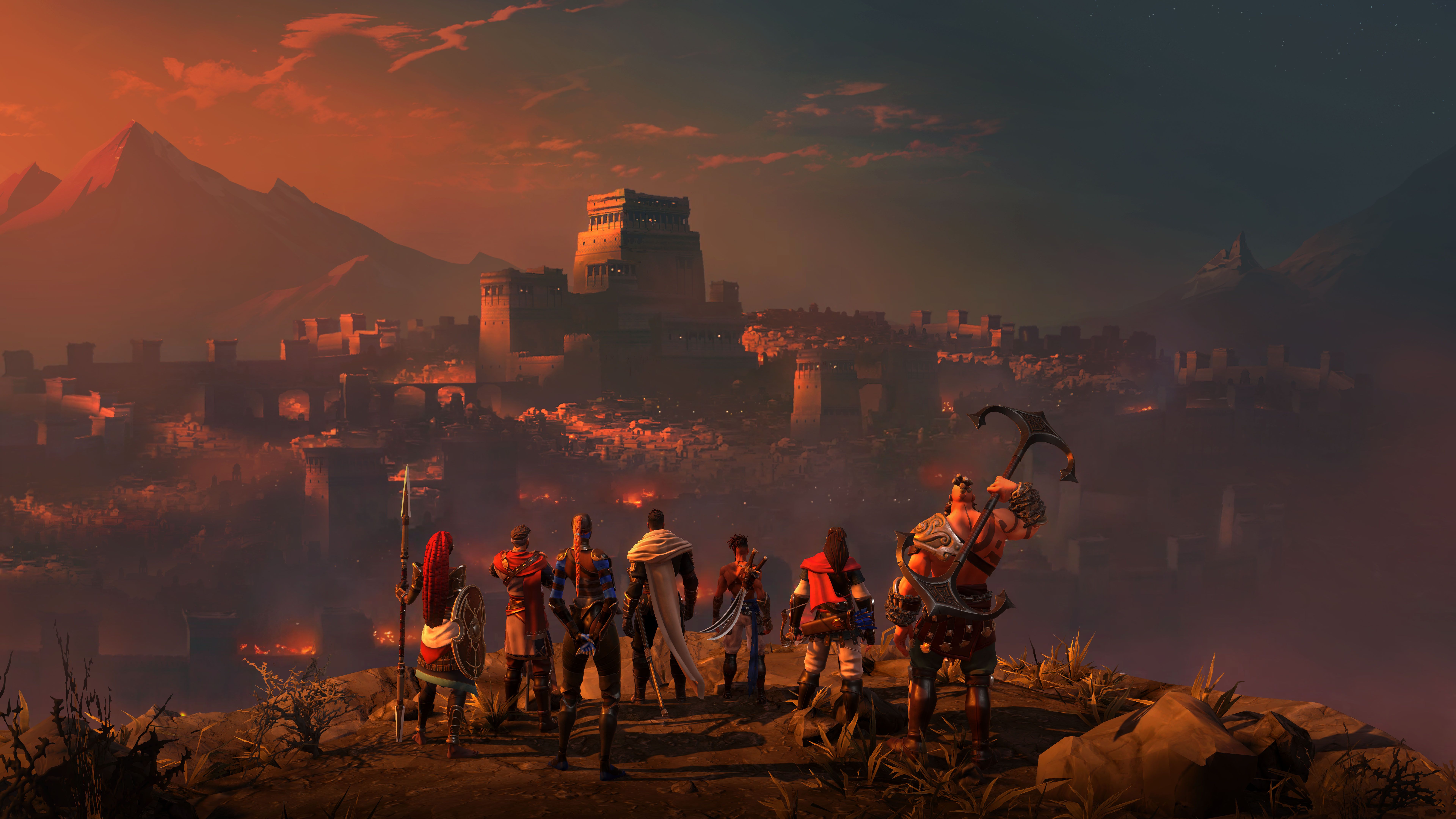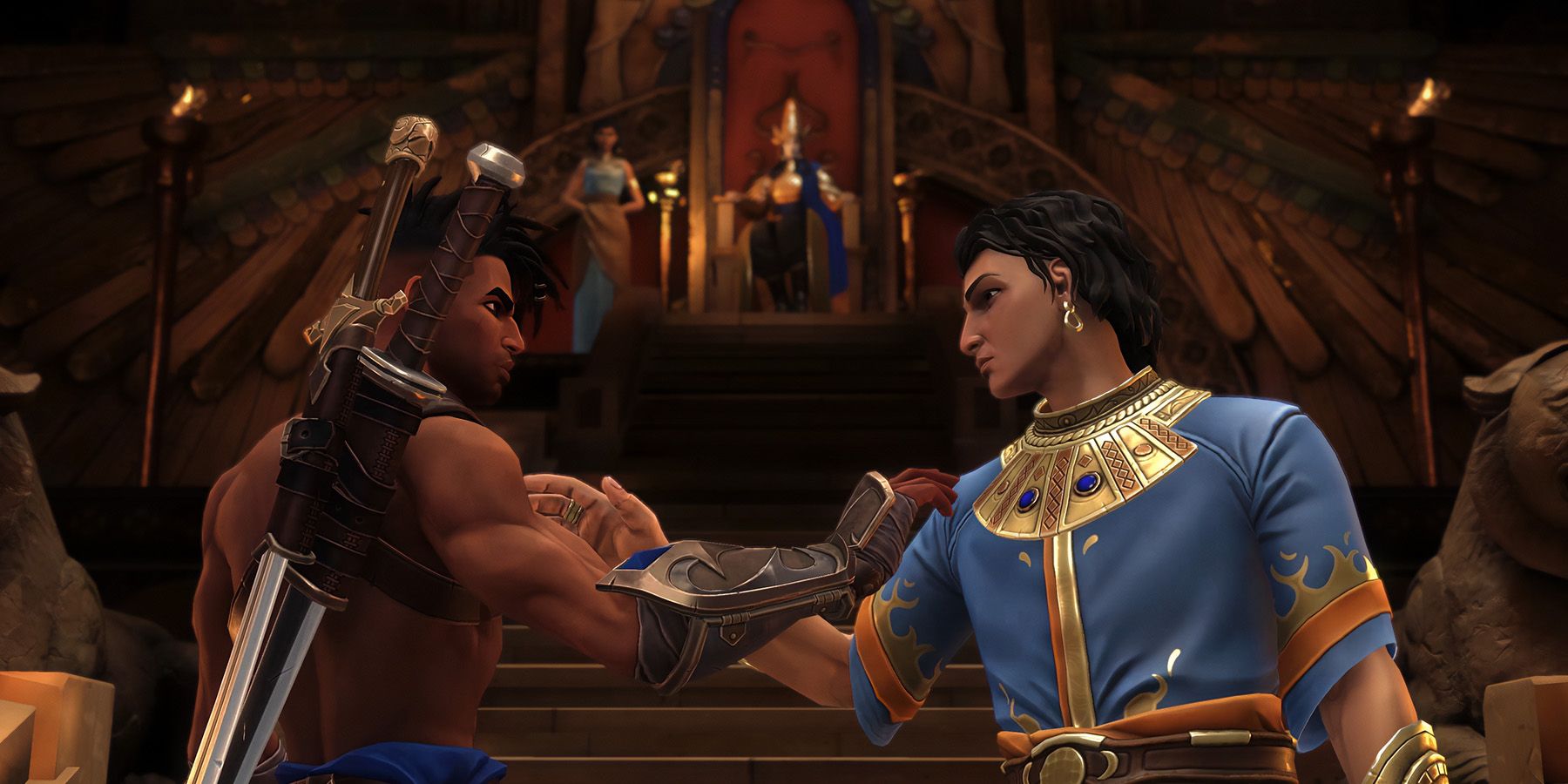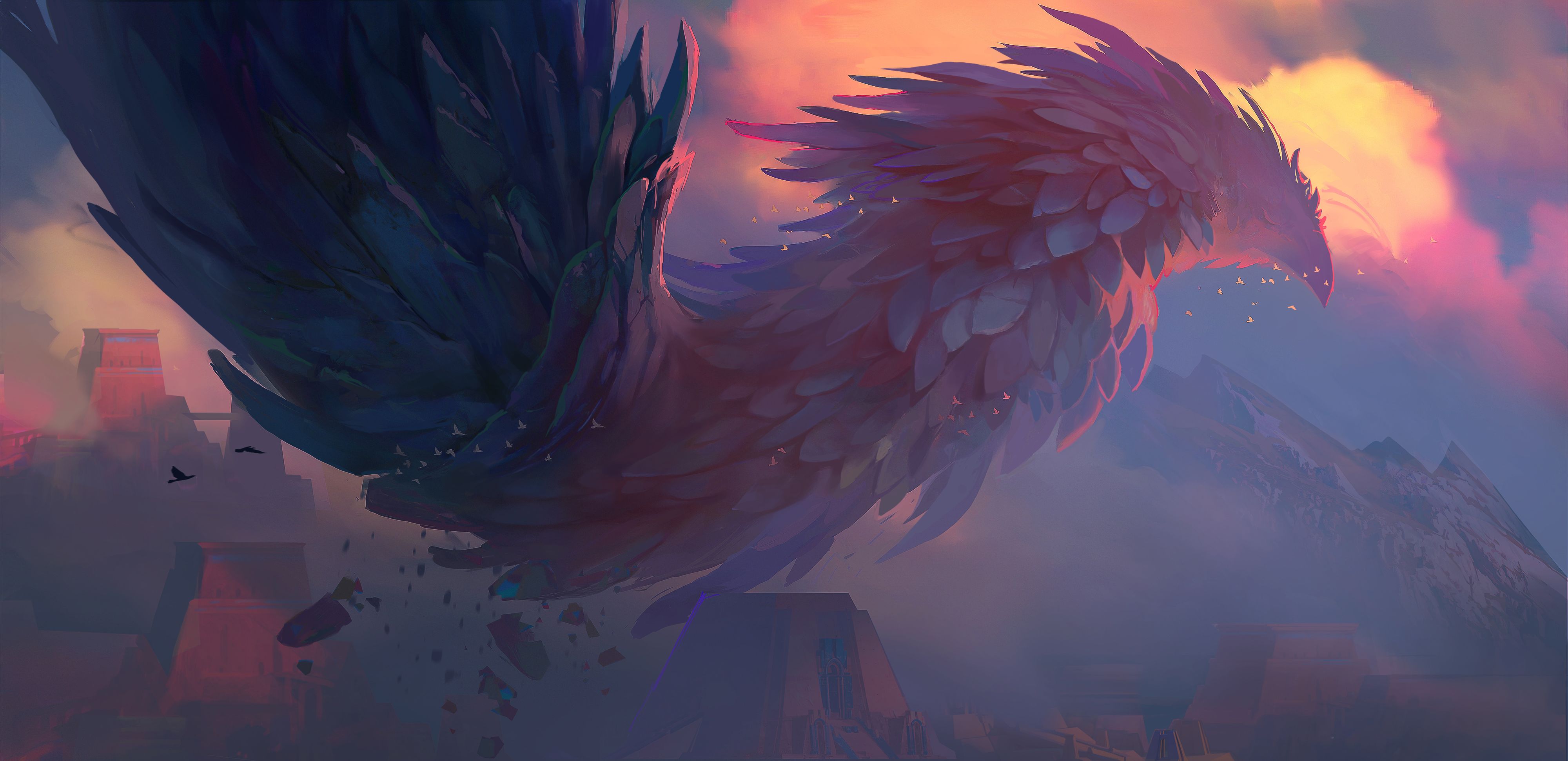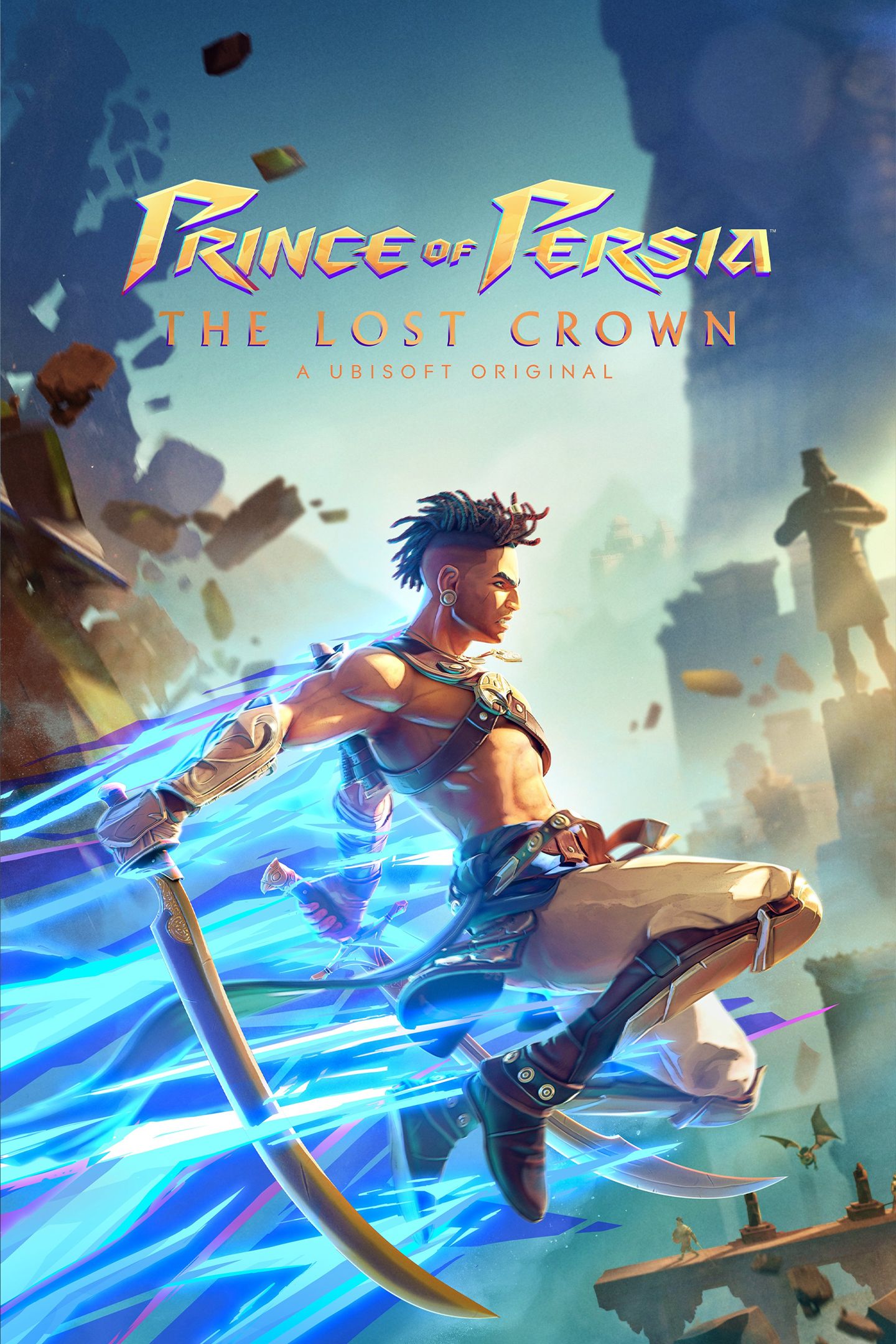The Phoenix is a well-known symbol of rebirth, one often used in video games, but you wouldn't call Prince of Persia: The Lost Crown a Phoenix for bringing the franchise back after a 14-year-long absence. Instead, Prince of Persia: The Lost Crown is a Simurgh - a distinct predecessor of the Phoenix, a giant bird of Persian mythology that would live for 1,700 years before plunging itself into flame to be reborn anew. Like the Simurgh, Prince of Persia: The Lost Crown plunges the franchise into fire and comes out with something new, yet familiar.
That's the way Ubisoft Montpellier developers explained its approach to the franchise when speaking exclusively with Game ZXC. Prince of Persia: The Lost Crown is its own thing, evidenced by the new protagonist Sargon, the new story direction, and the Metroidvania approach, but it couldn't be something new if it weren't for every game that came before. Prince of Persia: The Lost Crown inherits the mainline legacy of 1989's Prince of Persia, 1993's Prince of Persia 2: The Shadow and The Flame, 1999's Prince of Persia 3D, 2003's The Sands of Time, 2004's Warrior Within, 2005's The Two Thrones, 2008's Prince of Persia, and 2010's The Forgotten Sands.
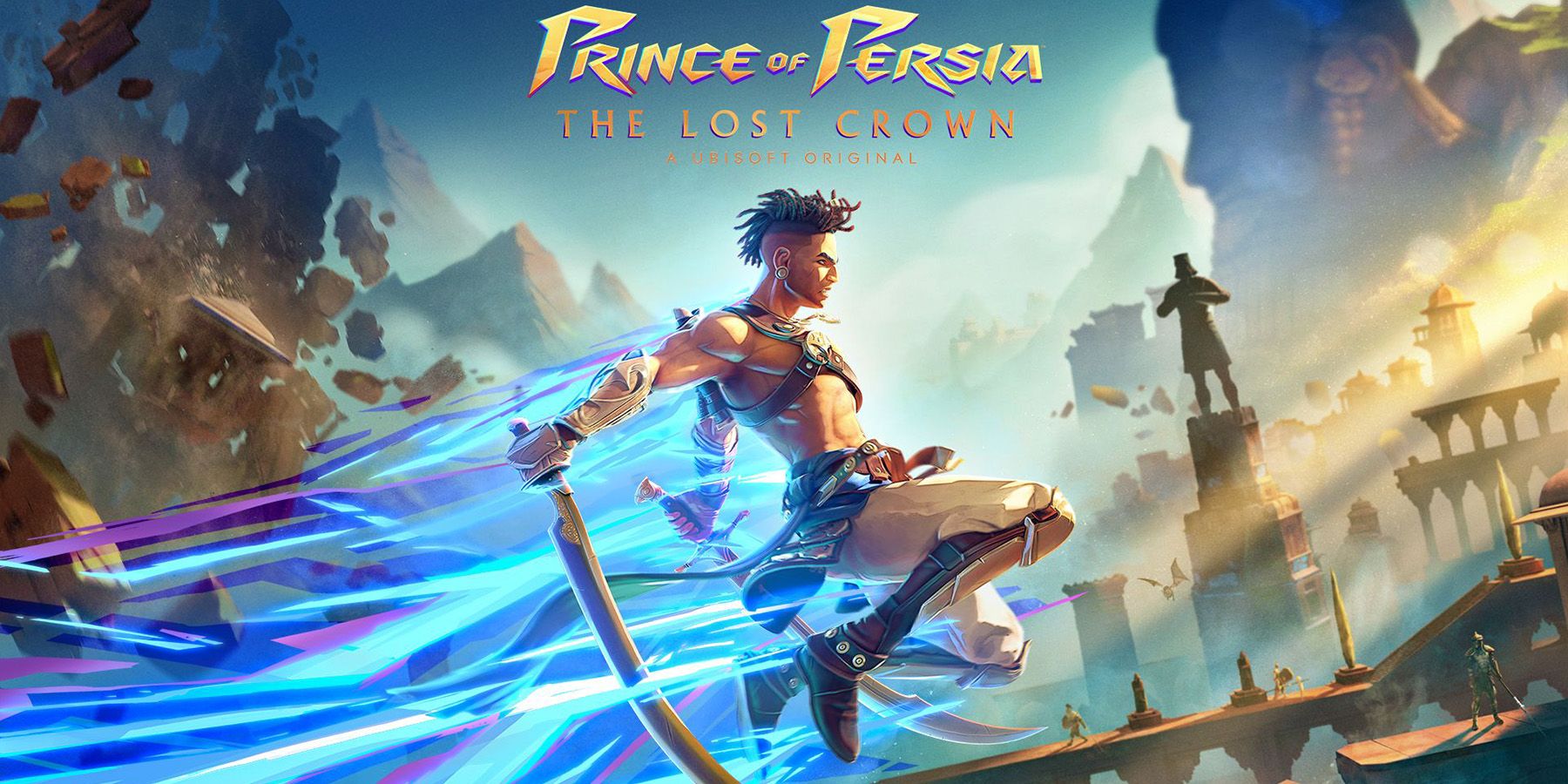
Prince of Persia: The Lost Crown Hands-On Preview
Game ZXC's three-and-a-half-hour preview of the upcoming Prince of Persia metroidvania showed fun exploration, tough bosses, and clever puzzles.
Not counting ports and remakes, there hasn't been a new Prince of Persia game since The Forgotten Sands in 2010. The fourteen-year distance between it and Prince of Persia: The Lost Crown might as well be 1,700 years in an industry dominated by the "next big thing." That's the crux of this upcoming Metroidvania game; it has to soar to the same heights as the games that came before, while also delivering something fresh and not anchored to what the franchise was before.
The Bird Before the Flames
While Prince of Persia: The Lost Crown is not connected to previous games, what they accomplished cannot be ignored. Narrative and animation director Jacques Exertier, senior producer Abdelhak Elguess, and game director Mounir Radi all recall fond memories of the earliest days of the franchise, and it stands to reason that many fans of the franchise will feel the same. When asked what makes a good Prince of Persia game, Exertier explained,
Since the first episodes, the Prince of Persia brand has been built on pillars that quickly became its signature. We absolutely wanted to be part of this legacy and respect these pillars that the players have loved. A balance between combat, acrobatics, and puzzles supported by a strong story in Persian fantasy. The theme of time is also one of the historical strengths of the brand. We wanted to both respect this unique DNA and offer a new approach to it.
Prince of Persia: The Lost Crown retains this DNA, while doing its own thing. It is a 2.5D game with an anime-esque art style, featuring Metroidvania-inspired platforming. Story-wise, players take on the role of Sargon, as he seeks to rescue the now-named Prince Ghassan from Mount Qaf. Of course, it wouldn't be a Prince of Persia title if there weren't time-based powers that Sargon wields for both combat and platforming, although interestingly, the game's primary antagonist is the wielder of the Sands of Time. In that, fans see just one way the game has inherited the franchise's long legacy, yet aims to break from it.
Sargon Inherits the Prince's Legacy
1989's Prince of Persia set off something that would be truly special. It introduced fans to the unnamed Prince, who would seek to save a captured princess from Grand Vizier Jaffar. The concept was simple, yet it launched to critical acclaim and kicked off the cinematic platformer genre. Many games, such as Another World, Flashback, Tomb Raider, and more drew inspiration from the title. In other words, Prince of Persia didn't just father a franchise; it birthed a genre and inspired many in its footsteps.
1993's The Shadow and The Flame is a direct sequel that sees Jaffar assume the Prince's appearance, seize the throne, and put the princess under some form of death spell. Just as the narrative moved time forward, so did the sequel, accomplishing what any sequel aims to do: surpass its predecessor.
Unlike the first two games, Prince of Persia 3D was released to a mixed reception. Many fans were not happy with the overall gameplay and the title was rife with bugs at launch, yet its role in Prince of Persia's legacy cannot be understated. It was the fan response to this title, among other things, that led series creator Jordan Mechner to sell the entertainment division of his company to Ubisoft. He would later agree to reboot Prince of Persia with Ubisoft, leading to one of the most influential titles in the franchise and in the industry, Prince of Persia: The Sands of Time.
Prince of Persia: The Sands of Time introduced several key mechanics that would define the franchise, such as the titular sands and the Dagger of Time. Not only would it put the franchise back at the forefront of the industry after Prince of Persia 3D, but it also has been hailed as one of the greatest video games of all time. It set off its own sequel continuity, inspired a film adaptation, and would also indirectly spawn one of Ubisoft's greatest IPs of all time: Assassin's Creed. Furthermore, a remake of The Sands of Time is in development, with many fans eagerly awaiting more information on the project.
2004's Warrior Within continues The Sands of Time continuity, though this time without Mechner. The PS2 and Xbox versions were generally well-received, with many praising its combat, level design, and story. However, it was much darker in tone than its predecessor and significantly changed the Prince, with those elements gathering mixed reactions, including from Mechner. It wasn't the clear-cut improvement like The Shadow and The Flame, but it did the undeniable - it pushed the franchise forward in time.
Two more games would take place in the Sands of Time continuity: 2005's The Two Thrones, a direct sequel to Warrior Within, and 2010's The Forgotten Sands, which takes place between The Sands of Time and Warrior Within. The Two Thrones was a well-received conclusion to the trilogy, while The Forgotten Sands received solid reviews on most platforms (except for PSP and DS).
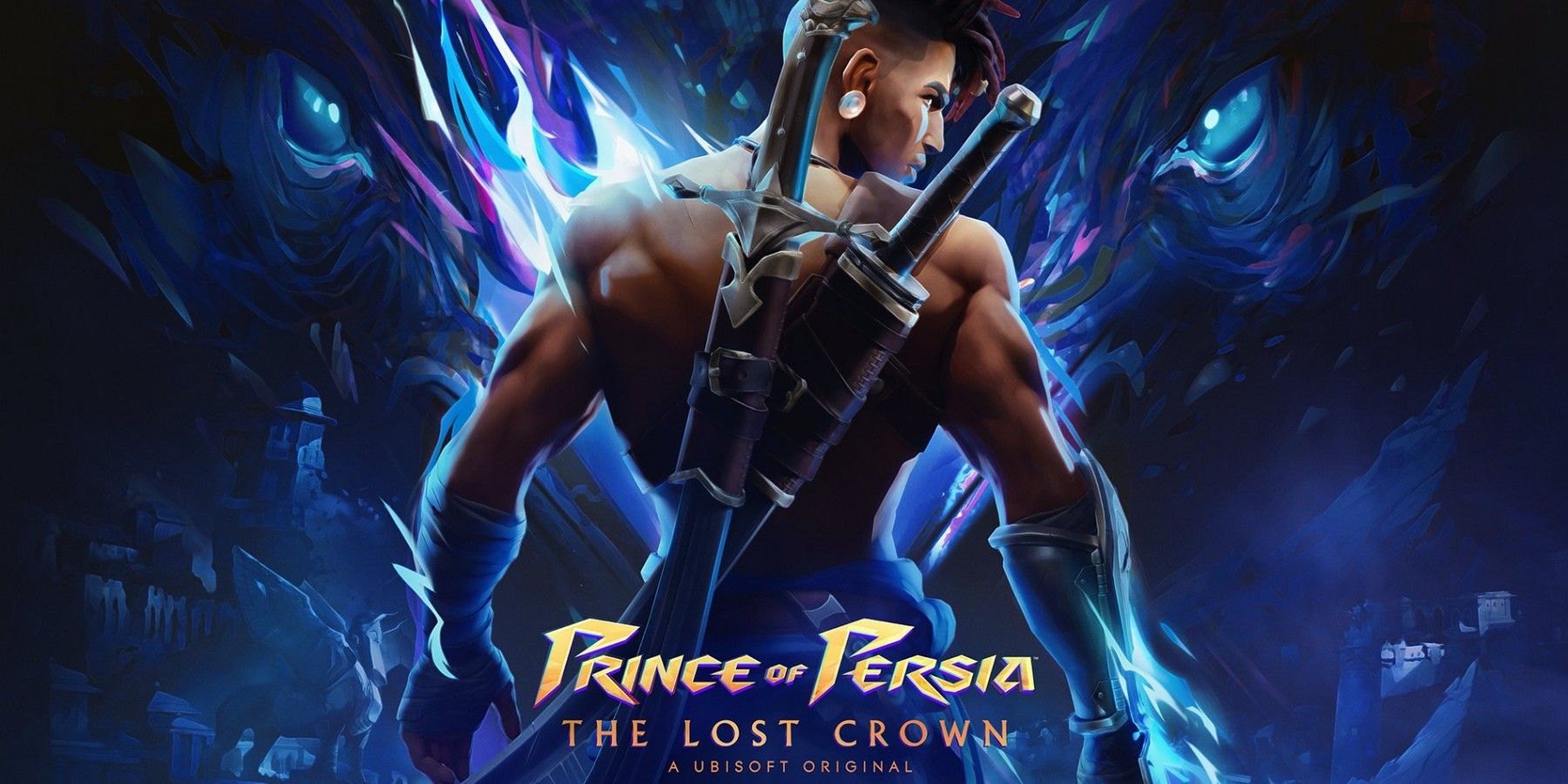
Prince of Persia: The Lost Crown - Minimum PC Requirements
Ahead of its launch, Ubisoft has revealed the minimum PC requirements for Prince of Persia: The Lost Crown.
2008's Prince of Persia was a reboot that launched its own continuity, receiving generally positive reviews in the process. However, it only received one spin-off in the form of Prince of Persia: The Fallen King on Nintendo DS. It ultimately served as the second reboot of the franchise, showcasing three different continuities: the original trilogy, the Sands of Time continuity, and the 2008 one.
Any long-running franchise has its highs and lows, but in each of these titles is the clear DNA of Prince of Persia. There is a clear balance between combat, puzzles, and acrobatic exploration, and the theme of time remains at the forefront. Each title had its own take on these elements, but Prince of Persia: The Lost Crown might just be the most dramatic, yet intriguing departure from them yet. It is not part of any prior timeline, setting off a fourth continuity within the franchise, and series creator Mechner finds this new approach exciting:
For anyone wondering: The Lost Crown is not a continuation of either the Sands of Time or the retro-2D storyline, it's a fresh beginning. I didn't write or have a direct role in this one — which means I'll get to enjoy its surprises as a gamer. I know the talented POP team at Ubisoft Montpellier well, I've watched them pour their hearts and passion into this project over three years from pre-conception to full beta, and I couldn't be more excited. This is the Prince of Persia game I've been wishing for.
Into the Fire
After what feels like 1,700 years (or 14 years in the game industry), Prince of Persia has gone into the fire and come out something new, using those fires to forge a new direction. The Sands of Time return, but they are not in players' hands. Prince of Persia: The Lost Crown is not about an unnamed prince rescuing a princess, but about a warrior rescuing the now-named Prince Ghassan. On flipping this script, Exertier said,
The player will find many elements they loved in previous installments but in a renewed manner. While respecting the core pillars, we chose to put a twist on some of the brand's fundamentals. Indeed, this time, having the Prince himself and not a female character in the role of the one to be saved seemed interesting to us. These initial and foundational decisions have guided us significantly, presenting us with new choices and leading us to explore new directions in the narrative.
Meanwhile, the choice to finally give the Prince a name so long after the franchise's inception comes down to convenience. As Exertier explained, the decision went hand in hand with the choice not to make players take on the role of the Prince, but the warrior who saves him: "We needed to clearly identify these two characters, give them an identity, a journey, and build their relationship to strengthen the stakes of the adventure."
Prince of Persia: The Lost Crown is bucking a franchise-long tradition in replacing the prince with Sargon, but it was not a choice made lightly. It came down to giving the franchise a proper rebirth, as Exertier would explain, this new original adventure has no connection to previous or upcoming games. There is no connection to the original trilogy, to the Sands of Time continuity, or the 2008 reboot. There are not even any connections to the upcoming Sands of Time remake, in case fans hope there might be.
In the previous episodes, the hero was largely defined and characterized by his princely role. Sargon is not the Prince. We had to build an origin, a past, and a trajectory for him to become.
Furthermore, players shouldn't expect Sargon to be too similar to the Prince of the past. While both characters have extraordinary abilities and time-related powers, Sargon received a warrior's education, not a regal one. Sargon fought for his spot in the powerful warriors known as The Immortals, never knowing the splendors of the palace, and his past is something else entirely.
A New Simurgh
While Prince of Persia: The Lost Crown shares the DNA of past games, it is a new bird forged from the flames of its past. It retains elements from the original while also breaking new ground in its Metroidvania approach, location, story, art design, use of mythological creatures, and more.
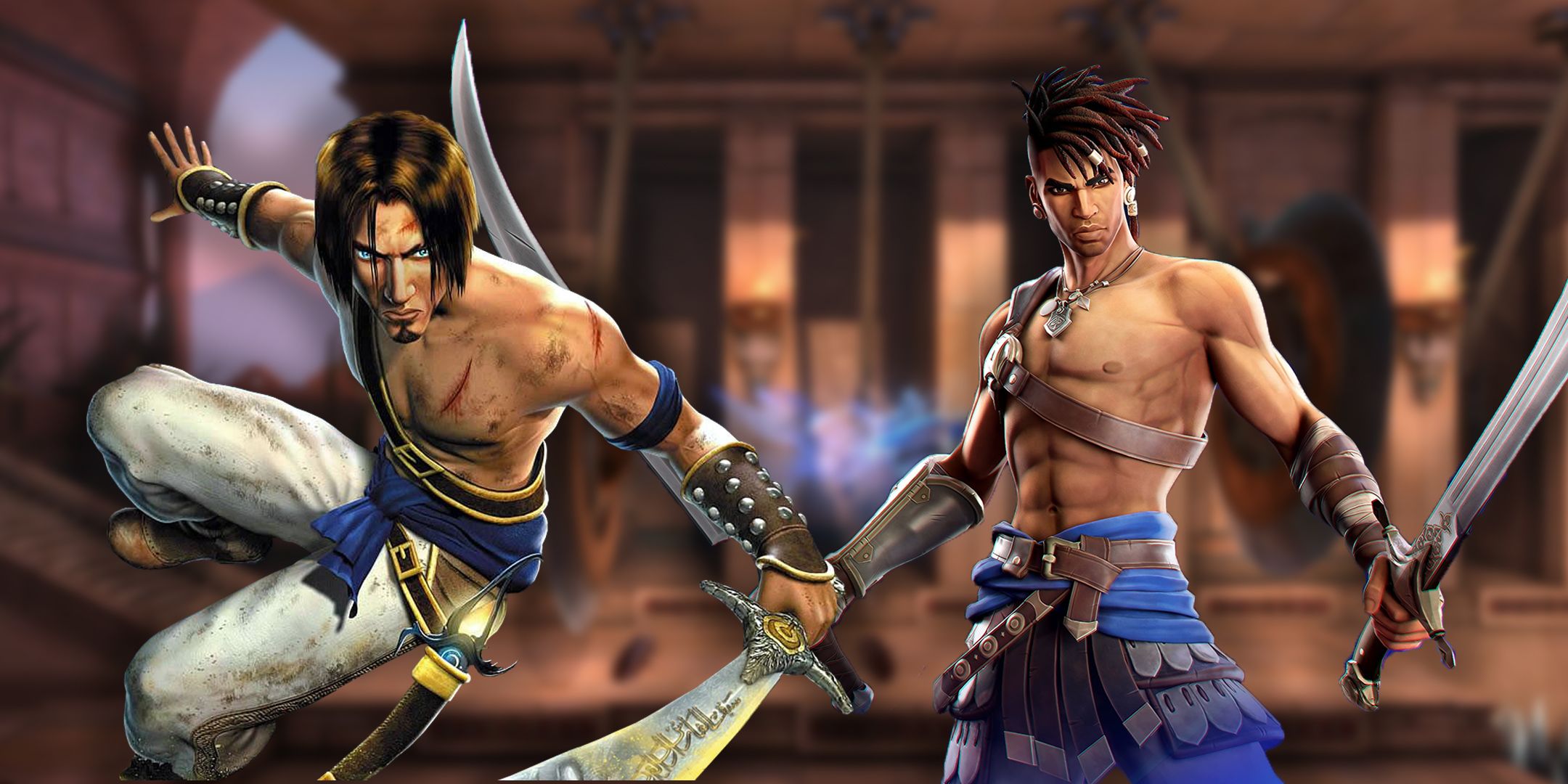
Every Prince Of Persia Game, Ranked
The Prince of Persia series has produced classic titles across more than three decades. Here's how they all rank from worst to best.
Metroidvania Gameplay
In a way, Prince of Persia: The Lost Crown returns to its franchise roots just like Assassin's Creed Mirage did, but it takes the typically linear platforming of those earlier games and opens them up. As Elguess would explain, this allows the development team to capture what made Prince of Persia unique and innovate on it at the same time.
The metroidvania approach allows us to truly bring together the essence of what a Prince of Persia is . It is possible to do combat, platforming, and puzzles at a very high level. And as in Prince of Persia, immersion in a world is central, the possibility of exploring and traveling freely in various biomes seemed central to us and respectful of the freedom that we wanted to give to the players.
Elguess would also explain that the team looked at both 1989's Prince of Persia and The Sands of Time to craft the world design and levels, while they went back to the source of Metroidvanias (Castlevania and Metroid) in terms of structural influence. Radi added that specific titles, like Castlevania: Symphony of the Night, Super Metroid, and even Hollow Knight, had some influence on its Metroidvania approach. However, that's not to say that Prince of Persia: The Lost Crown doesn't bring anything new to the table.
Prince of Persia: The Lost Crown is a Metroidvania in the sense that it features hidden secrets, requires backtracking, and features various puzzle-platforming. Progression is made by acquiring new abilities, like the Chakram, which can be used to remotely override certain mechanical blocks. But sometimes backtracking in Metroidvania games can be more detrimental than fun. This is especially true when, after making the long trek, players realize that the new ability they unlocked is not designed for a specific puzzle. To counteract this, Prince of Persia: The Lost Crown introduces the Memory Shard system. When players feel like they can't progress in an area, they can use this new feature to mark the location with a screenshot and refer back to it as new abilities unlock.
While it's now a "new" feature, it's worth highlighting how much work was done to make Prince of Persia: The Lost Crown as approachable as possible. While there is a Souls-like run to recover lost currency upon death, the game only takes a tiny amount from the player each time they fail. On top of that, players can adjust numerous elements of gameplay unlike many Souls-vania games. For example, enemy health, enemy damage, environmental damage, parry and dodge windows, and the depletion of the Athra gauge are all things players can adjust to their liking.
Mount Qaf
Prince of Persia: The Lost Crown is set in Mount Qaf, an iconic location in Persian mythology. Atop Mount Qaf rests the Simurgh, which Ubisoft depicts as an enormous divine bird that protects the kingdom. In relation to Mount Qaf, players will be able to explore locations like the Citadel of Knowledge, the undead-filled and trip-laden Lower City, the Sacred Archives which preserve all human knowledge, the lush and flora-filled Autumnal forest, the abysses of Mount Qaf, and the Upper Citadel of Darius, King of Kings. Above the latter, notably, are mages who could invoke the Simurgh for protection.
Of course, it wouldn't make for a dynamic environment if everything was peachy on Mount Qaf. It has been covered in a curse for about thirty years when the game starts, meaning those who ventured to it never come back. This adds a sense of danger to the Prince Ghassan rescue mission, as it tests even the powerful Immortals. Its fall weakened Persia, impacted agricultural yields, and saw the Simurgh take flight, abandoning the Persian people.
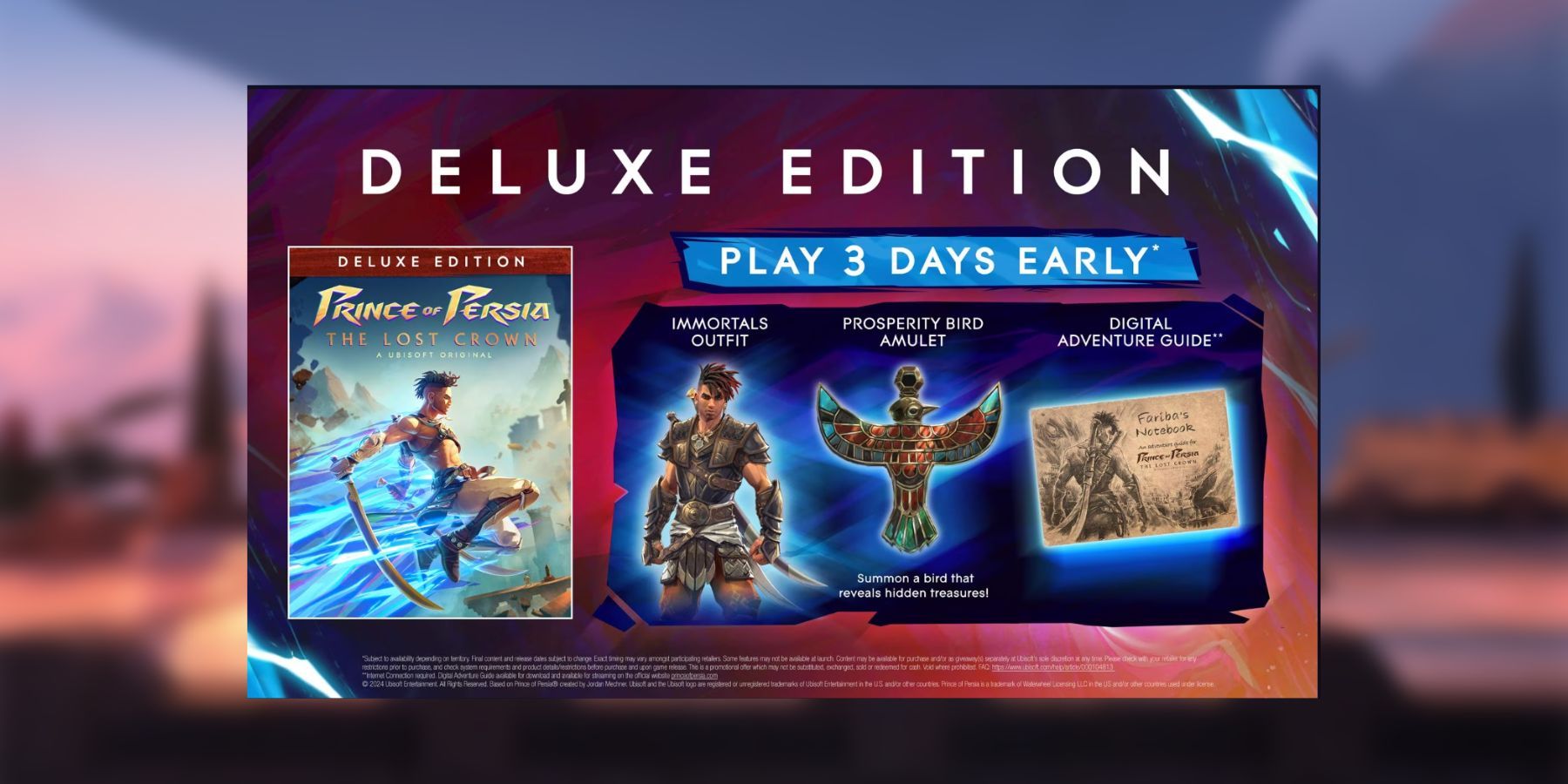
Prince of Persia: The Lost Crown - How to Claim All Deluxe Edition and Pre-Order Bonuses (Warrior Within Outfit)
A guide covering all deluxe and pre-order bonuses for Prince of Persia: The Lost Crown, including how to claim the Warrior Within outfit.
According to art director Jean-Christophe Alessandri, the approach to creating the various environments and biomes wasn't based on "absolute authenticity," but respect:
To name just a few, the imperial city of Persepolis where the Immortals' adventure begins, as well as the ancient Hyrcanian forests, the Caspian Sea, etc. We also wanted to depict legendary places like Mount Qaf, or very specific ones like the dakhmâ, the Towers of Silence, which are sites of funerary rituals. We aimed to offer game and exploration areas as rich and diverse as possible, without seeking absolute authenticity but always respecting the identity of these environments and developing their fantastical and grandiose aspects.
Across Mount Qaf, players will also encounter "time glitches" where time and space are distorted. This creates a lot of fun gameplay experiences, since the glitches not only disturb natural phenomena, but also certain scenes will transition from frozen in time to unfrozen quickly, changing the environment and giving players a new environment on top of an old one.
Art Design
Warrior Within's darker direction didn't hit with critics who preferred the more colorful Sands of Time, so it'll be interesting to see how Prince of Persia: The Lost Crown's art design is ultimately received. It wears its anime influences on its sleeves, not just for its environments and action scenes, but for the development of Sargon's story. Alessandri said the art surrounding Sargon is based on various Nekketsu shonen anime/manga.
Nekketsu shonen anime/manga typically, but not always, features an orphan or abandoned central figure with a naive, strong sense of justice who rises from nothing to a hero of immense caliber, often with the aid of magical powers.
Among its influences are Dragon Ball Z, One Piece, My Hero Academia, Sword of the Stranger, and Ninja Scroll, while the overarching and more story draws from more mature anime such as Berserk, Vinland Saga, and Vagabond. Alessandri also promised that Prince of Persia: The Lost Crown is a "love letter for these references, and we invite [players] to find all the hidden winks in the game!" Alessandri would also speak to the art benefits of the game's 2.5D design:
From an artistic standpoint, we have better control over the camera, the viewpoint, and therefore what we want to show the player... or not . For example, it allowed us to precisely work on image composition, to be as close as possible to the beautiful concept art that the artists had created, and to maintain that illustrative style. It also enabled us to work on animations from a controlled perspective, highlighting the actions of Sargon and other characters, especially during combat.
Mythology in Prince of Persia: The Lost Crown
While the Prince of Persia franchise is no stranger to mythological creatures and concepts, it seems that Prince of Persia: The Lost Crown is doubling down on these beasts, like the Simurgh, the Manticore, and the Azhdaha. Exertier praises the entire mythology, saying, "Persian mythology, its bestiary, and its pantheon are of almost infinite richness. They have been an exceptional source of inspiration for us." He would specifically name-drop the Lamashtu, Anzu, Djinn, Akoman, Elik, and the Nasu as all "initial narrative building blocks" that could easily be worked into the game's story, yet also as sources of inspiration for in-game abilities.
When asked about how Prince of Persia: The Lost Crown's mythology differs from Assassin's Creed, Exertier explained,
One of the pillars of the Assassin's Creed brand is the intention to embed and anchor the episodes in historical reality. This is not the case for the Prince of Persia brand. More specifically, in Prince of Persia: The Lost Crown, we drew inspiration from both historical reality and Persian myths and legends. They served as a valuable source of inspiration, but we chose to break free from them when game design, the scenario, or the narrative arcs of our characters prompted us to do so.
Time in Sargon's Hands
Prince of Persia: The Lost Crown represents a new continuity for the franchise, removed from all the past games but carrying their legacy. But unlike The Sands of Time or 2008's Prince of Persia, it is not a reboot; it is a rebirth. It is the Simurgh rising from the flames anew. Only time will tell if Sargon's legacy can be as far-reaching as the Prince's, but it's clear how much passion Ubisoft Montpellier poured into this game. Sargon, alongside his players, stands ready to tackle the challenge of Mount Qaf when Prince of Persia: The Lost Crown releases on January 18.

